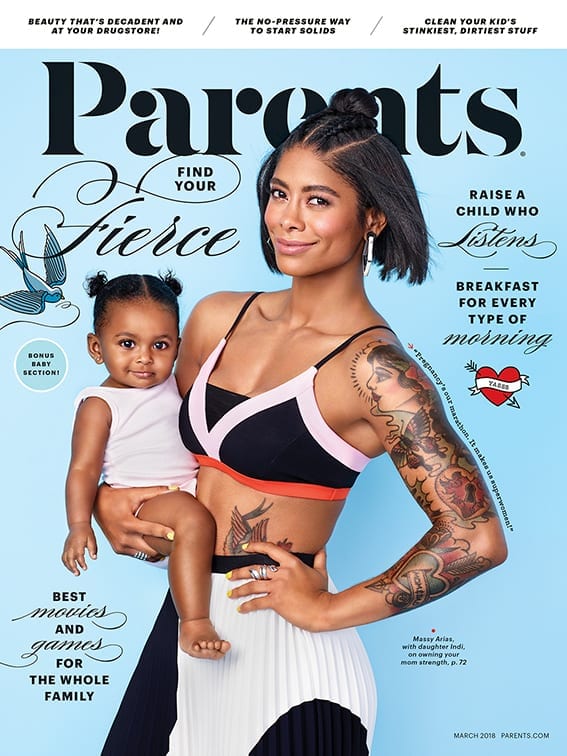|
Getting your Trinity Audio player ready...
|
Ever since the birth of the internet and the subsequent rapid evolution of technologies, print has struggled to keep up. Latest industry figures lay bare the challenge facing the sector.
Last year, US magazine media lost a reported $417.5 million in print ad revenue, a 6.4 percent drop from the previous period, according to analysis from the Association of Magazine Media. Indeed, the reported magazine ad spend by the 50 biggest advertisers last year fell to $6.1 billion from $6.5 billion in 2016.
The situation isn’t much better on the newsstand – ten years ago, more than 20% of circulation for audited magazines came from newsstands. Now that number is around 6%.
Yet, despite the ongoing headwinds (which only appear to be gathering pace), Meredith’s Parents magazine has figured out a strong and effective formula to make print viable in 2018.
Making print sustainable
Parents magazine is no industry newbie. The magazine is a tick over 90 years old and is a title that has been a stable performer in ad sales, maintaining a solid rate base and a sizable digital audience that averages 11 million unique monthly visitors. And when it comes to ad pages, while there are expectedly significant declines from 20 years ago, in recent years it’s doing more than just treading water.
Indeed, the September issue of Parents is up 20 percent in print ad pages sold versus 2017. Its 100 pages, the most the brand has sold since 2015, are in part thanks to booking 10 new advertisers from food to retail to home goods.
But what’s really interesting is the title’s ad page performance over the past 10 years, which since bottoming out in 2008 has remained mostly stable since. At a time when most titles have been in steady decline, what makes Parents different?
Targeting millennials
“We know millennials like print,” says Liz Vaccariello, who joined Parents as editor-in-chief in 2016 in an interview with Folio Magazine. “We also have such low duplications that may have gotten other magazines before, but for a few years, we know that this is the only magazine she gets. So that’s why we cover such a wide range of topics editorially.”
 Still, in an era when attention spans are short and the attention economy is fiercely competitive, print is challenged as a marketing vehicle due to the limitations of the medium. Most obvious, it’s not a dynamic digital product that can reveal real-time insights like the web or mobile platforms. But that doesn’t mean it doesn’t work. “It’s about smart marketing,” Steve Grune says, VP and publisher. “You have to bring some unique programs to the table. The other thing is editorial and content integration. I work very closely with Liz and her team so we can utilize editorial that’s being created and put that to work in unique ways for our advertising partners.”
Still, in an era when attention spans are short and the attention economy is fiercely competitive, print is challenged as a marketing vehicle due to the limitations of the medium. Most obvious, it’s not a dynamic digital product that can reveal real-time insights like the web or mobile platforms. But that doesn’t mean it doesn’t work. “It’s about smart marketing,” Steve Grune says, VP and publisher. “You have to bring some unique programs to the table. The other thing is editorial and content integration. I work very closely with Liz and her team so we can utilize editorial that’s being created and put that to work in unique ways for our advertising partners.”
Referencing the September issue where Parents partnered with Clorox, he explained that, “They [Clorox] wanted to do something bigger, so together we created a ‘powered by Parents and presented by Clorox’ editorial feature. Clorox got credit for an editorial feature we had already had in the works and in the lineup. That’s why the relationship that Liz and I have is so important, and then putting that forward to our marketing partners in new ways. That’s really what the marketing community is looking for today.”
While not every magazine has the luxury of reaching a millennial reader, or the ability to sell across a diverse range of categories, Parents’ story has clear takeaways for an industry that still wants to believe in print. Creativity, insight, and collaboration should be considered table stakes.
What can publishers learn from Parents’ story?
Parents’ ability to actively identify millennials as its key to a successful print magazine is perhaps what publishers can take away most – the ability to identify and successfully target a tightly defined readership. It’s not as if most publishers don’t do this already, but what Parents’ magazine has done so well is adapting the publication entirely to suit its readership.
It’s not just print publishers adapting to tightly defined audience segments either – industry leader Reuters recently switched its consumer strategy away from general news audiences, to target professionals, with a highly personalised news app designed to inform rapid business decision-making. Although in its early stages, Reuters’ focus on the quality of information and coverage has the potential to set it apart from other digital news apps.
Whether it’s print or digital, the ability to know your audience has never proved more valuable.
Photo by Steve Shreve on Unsplash


